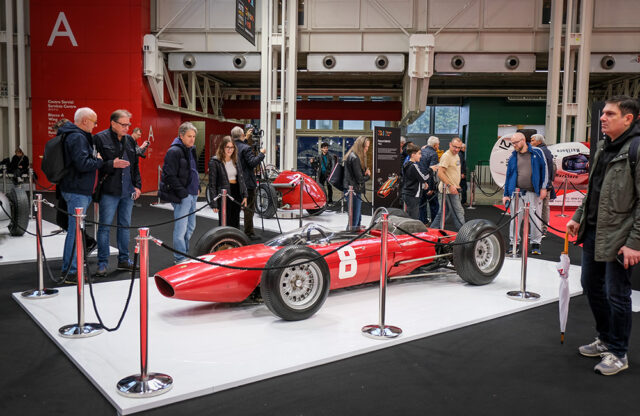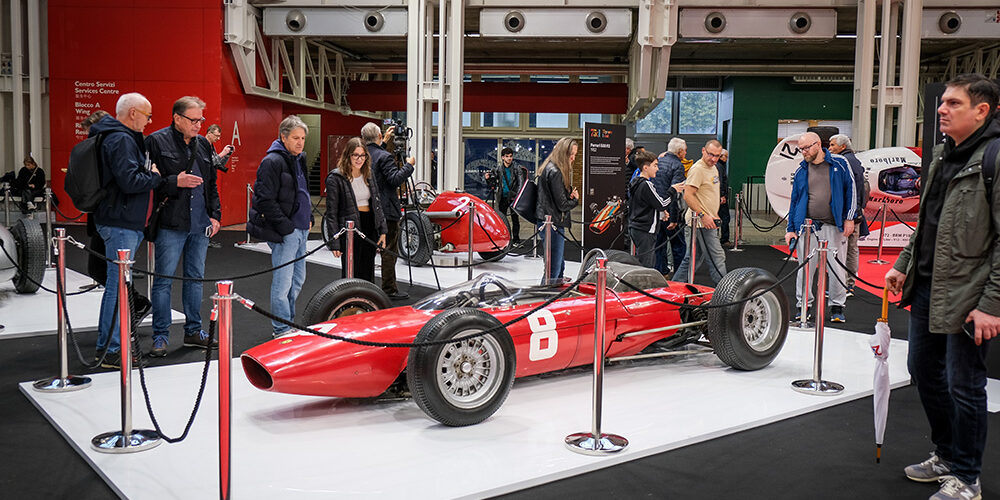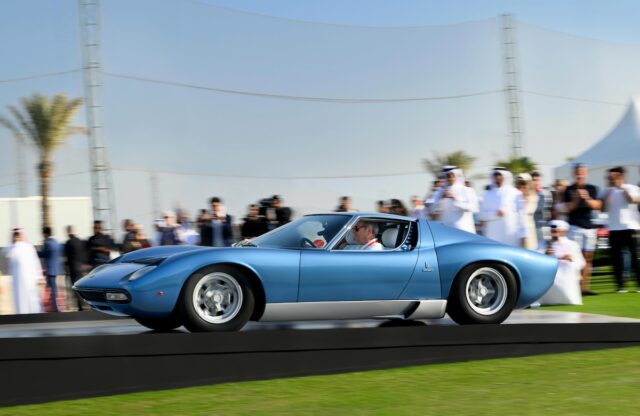Auto e Moto d’Epoca 2025 saw Formula 1 glitterati and grass-roots enthusiasm combine in one of Europe’s biggest shows. More than 5000 vehicles were on display at the Bologna event on October 23-26, across 14 exhibition halls, 235,000 square metres of interior space and many more super-sized canollis than a cardiologist would recommend.
The Italian show is a sharp contrast to its Rétromobile counterpart in France. Whereas the Parisian capital’s stand-out event hosts some of Europe’s largest dealers and manufacturers, Auto e Moto d’Epoca blends major specialists with smaller retailers, plus an autojumble and extensive club stands. Along the way you’ll find high-end exotica in the form of Enzo-era Ferraris and Lamborghini Miuras, modern hypercars and supercars, plus classic staples such as Jaguar E-types, Mercedes-Benz ‘Pagodas’ and Porsche 911s.
What makes Auto e Moto d’Epoca really special, however, is the random, the weird, the wonderful and, most importantly, the distinctively Italian. That can take the form of anything from oddball, limited-production Fiat-based carrozzeria specials of the 1950s to preserved rally heroes and Italian-market performance cars that rarely break cover outside of their homeland.
Here are just a few of our favourite exhibits from Auto e Moto d’Epoca 2025.
One of the major themes at Auto e Moto d’Epoca 2005 was a celebration of Formula 1’s 75th birthday. The opening central display didn’t disappoint: starting below, from the top left, Kimi Räikkönen’s 2007 F1 World Championship title-winning F2007, which was used in the title-deciding final race at Brazil; chassis 262 took the Finn to six victories that year. Top right is the Lotus 24 P1 as used by Jim Clark at the 1962 Brussels Grand Prix, where the Scot took pole. Bottom right is Gilles Villeneuve’s 1979 Ferrari 312 T4, as used in six races that season including his win at Watkins Glen, his three-wheeled pit visit in Zandvoort and his epic dice with Arnoux at Dijon. Bottom left is Niki Lauda’s BRM.
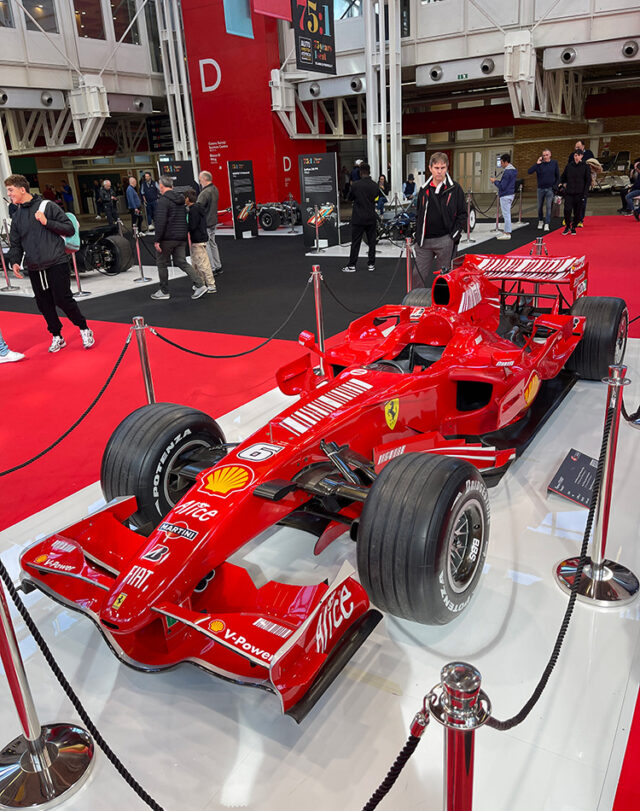
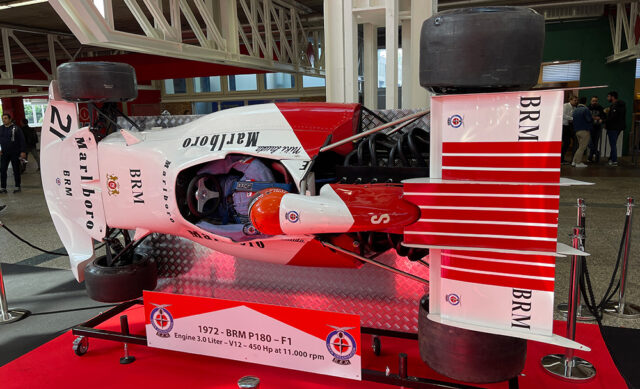
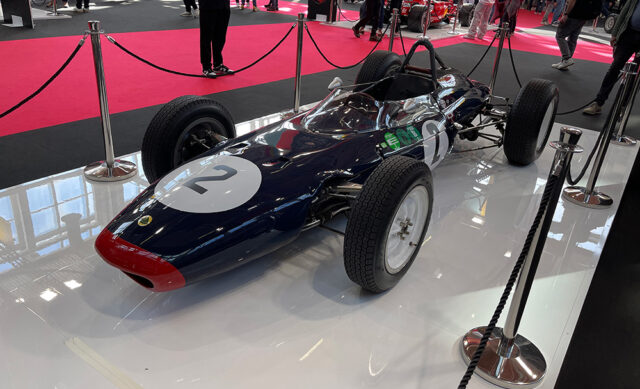
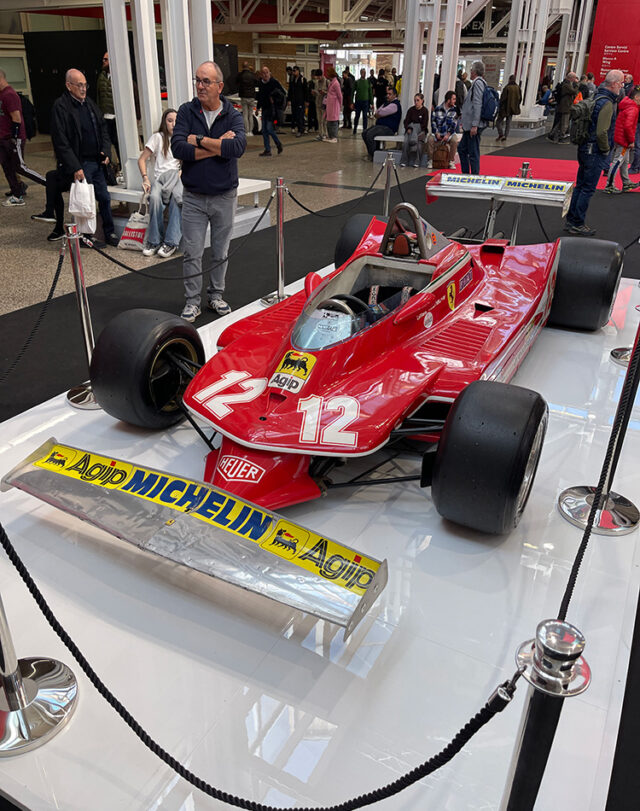
There were more obscure F1 treats on show at Auto e Moto d’Epoca 2005, including, below, from top left, a 1966 Cooper T81 Maserati that won the Mexican GP, the 1969 BRM P139 driven by John Surtees as the T-car for the US GP and raced it in Mexico, the 1980 Arrows A3 driven by Jochen Mass to fourth at Monaco and second in Spain, plus, away from the central display and on the Aquarama Boats and Cars dealer stand, there was this – the De Tomaso F1, chassis 002. Built in 1961, it was purchased new by Roberto Lippi, who raced it under the colours of Scuderia Settecolli.
During its active years, the car took part in numerous events including the Grand Prix of Naples with G Alberti, the Modena Grand Prix, the Italian Grand Prix at Monza and the Coppa Italia at Vallelunga. In 1962 it competed at the Naples Grand Prix in Posillipo, the Mediterranean Grand Prix at Pergusa and, once again, at the Italian Grand Prix in Monza. The following year it appeared at the Rome Grand Prix in Vallelunga, returned to Pergusa for the Mediterranean Grand Prix and concluded its known racing career at the Italian Grand Prix in Monza.
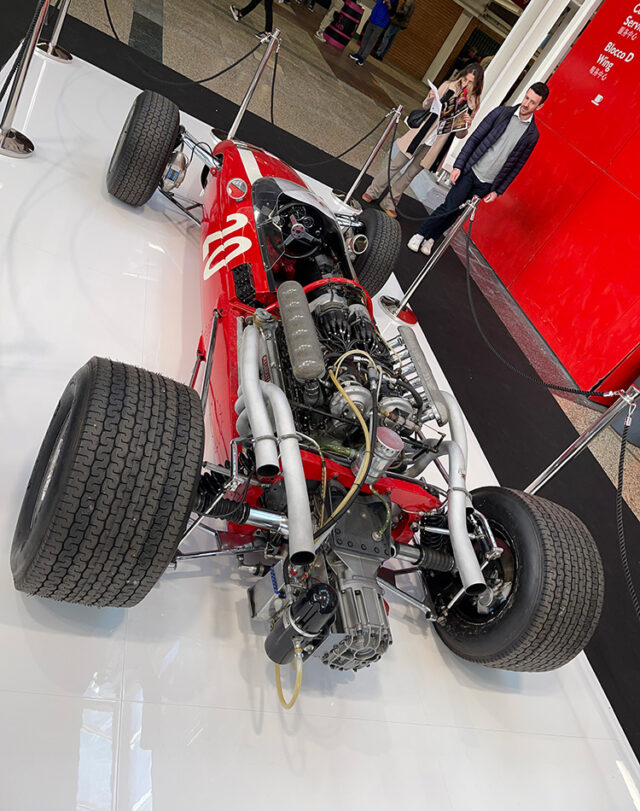
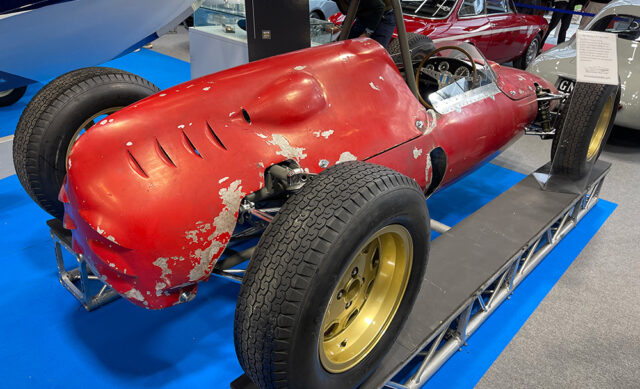
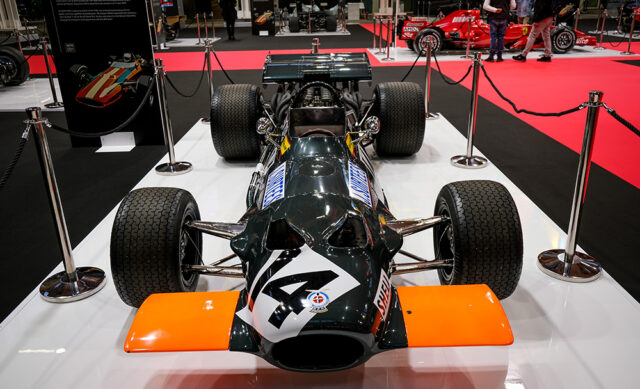
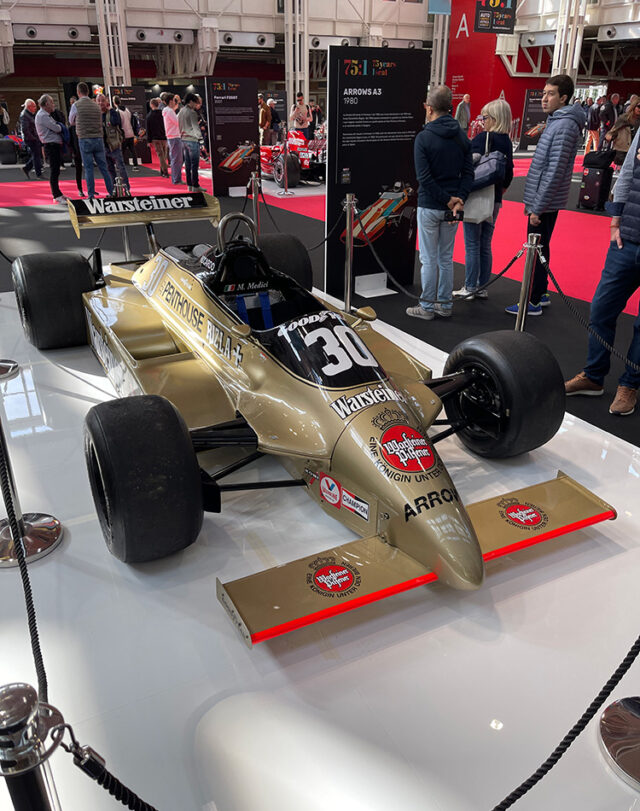
Lamborghini Polo Storico celebrated ten years in operation by bringing along a Lamborghini 350 GT – chassis number 2, the oldest-surviving example of the breed. It’s currently undergoing authenticity certification at Polo Storico, and it features a rare prototype Lamborghini badge in white and black – one of Ferruccio Lamborghini’s earliest logo concepts, which preceded the later gold bull on a black background that became the marque’s definitive emblem. Displayed alongside the car was an original full-scale technical drawing dated 1963, showing an interior study of the 350 GT. It is the oldest document held in the Lamborghini historical archive.
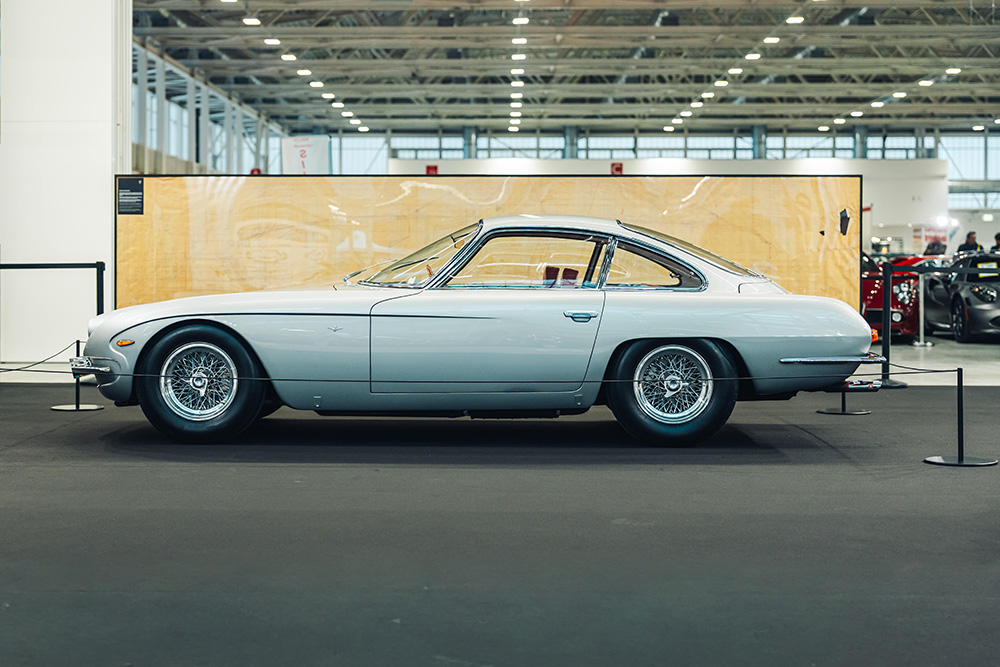
The Registro Internationale Touring Superleggera brought along this: a 1947 Alfa Romeo 6C 2500SS Aerlux. It was first owned by Count Gaetano Marzotto, the father of Mille Miglia-winning driver Giannino Marzotto, who learned to drive in this car. The 6C 2500SS served as the prototype for the Aerlux model, of which only 14 were built with a rising plexiglass sunroof – a costly and complicated innovation at the time.
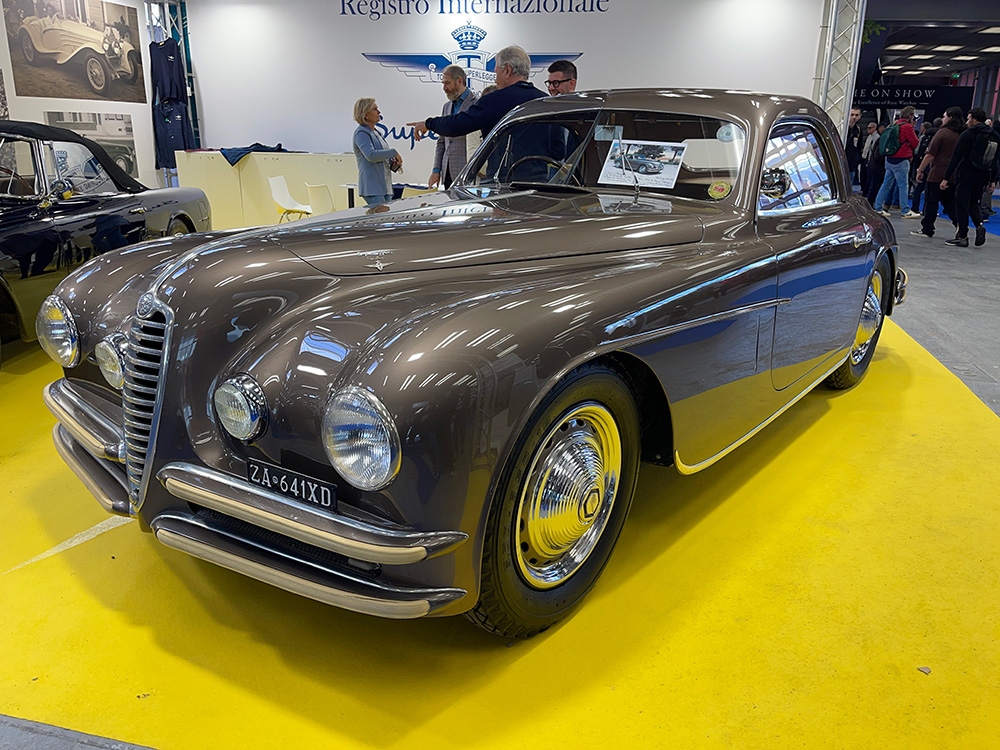
This Ferrari Testarossa was originally black and starred in a satirical film starring Carol Alt, Massimo Boldi, and Christian De Sica called The 90s – Part II. It was subsequently repainted yellow when it was converted into a Spider by Pavesi.
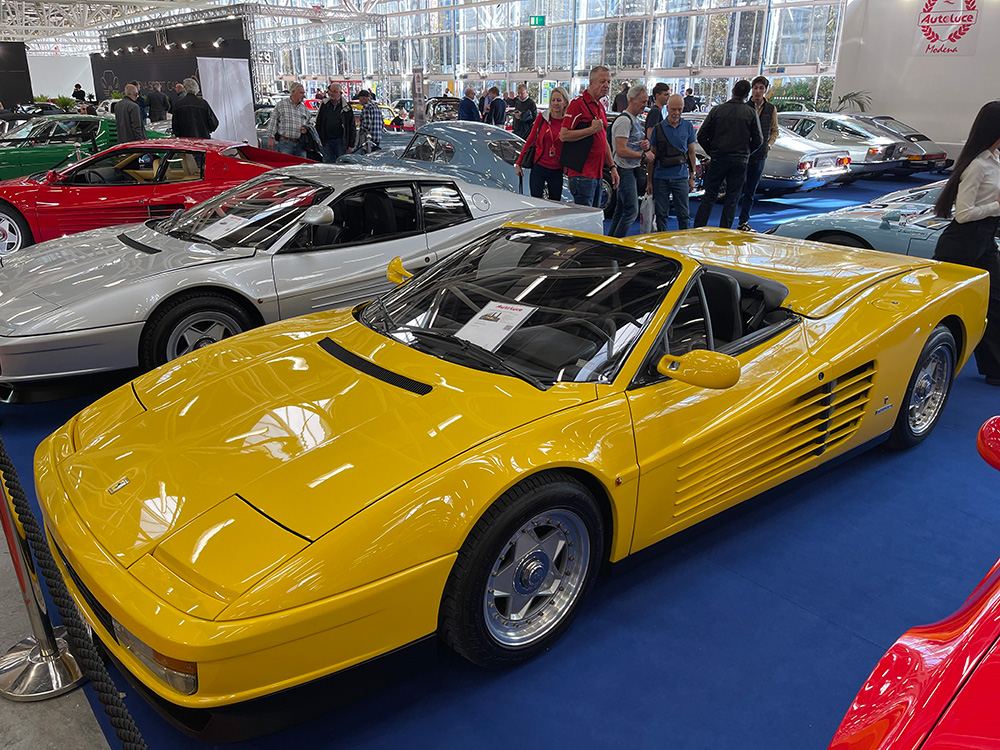
Pininfarina shared stand space with Broad Arrow, and it showed off its 1978 Jaguar XJ Spider design proposal, which originally made its debut at the British International Motor Show in Birmingham. Intended to introduce a more sporting flavour to Jaguar compared with the XJ-S, with which the car shared its mechanicals, the XJ Spider sported a V12 engine and aluminium bodywork over a shorter and wider chassis, and was intended for limited production.
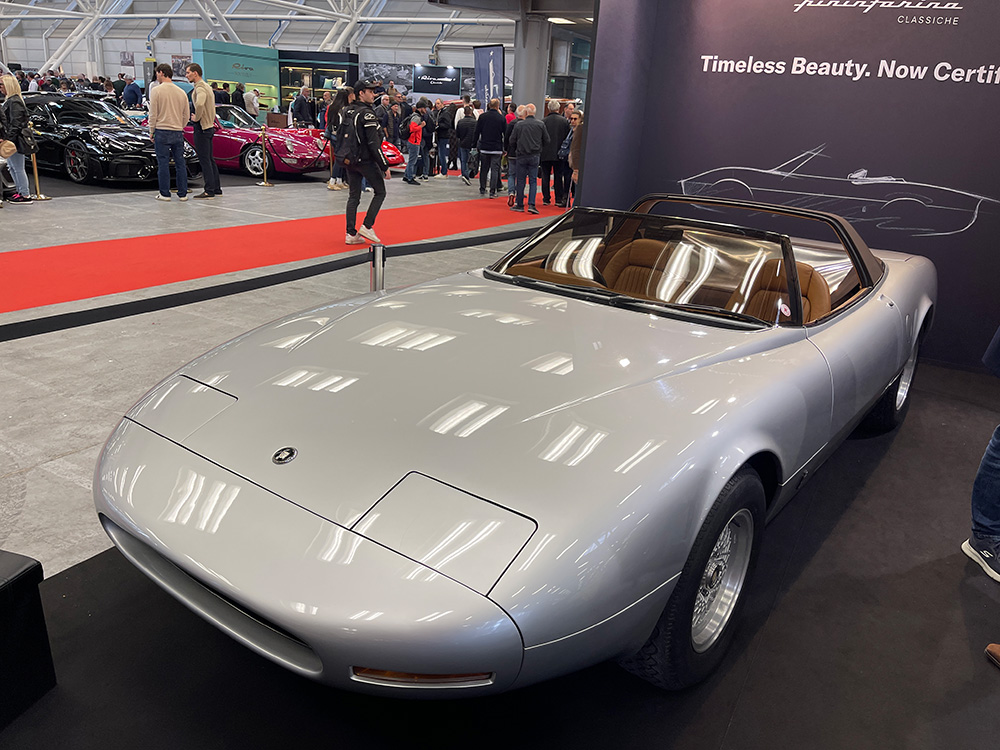
Auto e Moto d’Epoca 2025 wouldn’t have lived up to the grand heritage of the event if there wasn’t at least once peculiar one-off body over Fiat mechanicals – but we weren’t expecting this. Paolo Martin designed this utilitarian take on the Panda 4×4 called the Freely, for the coachbuilder Savio. Revealed in 1987, it featured a removable hard-top and windscreen, plus a bonnet and boot you could stand on – the idea being that you could use it to service aeroplanes and thus pass underneath them. However, it was also fitted with an awning, meaning you could sleep on it.
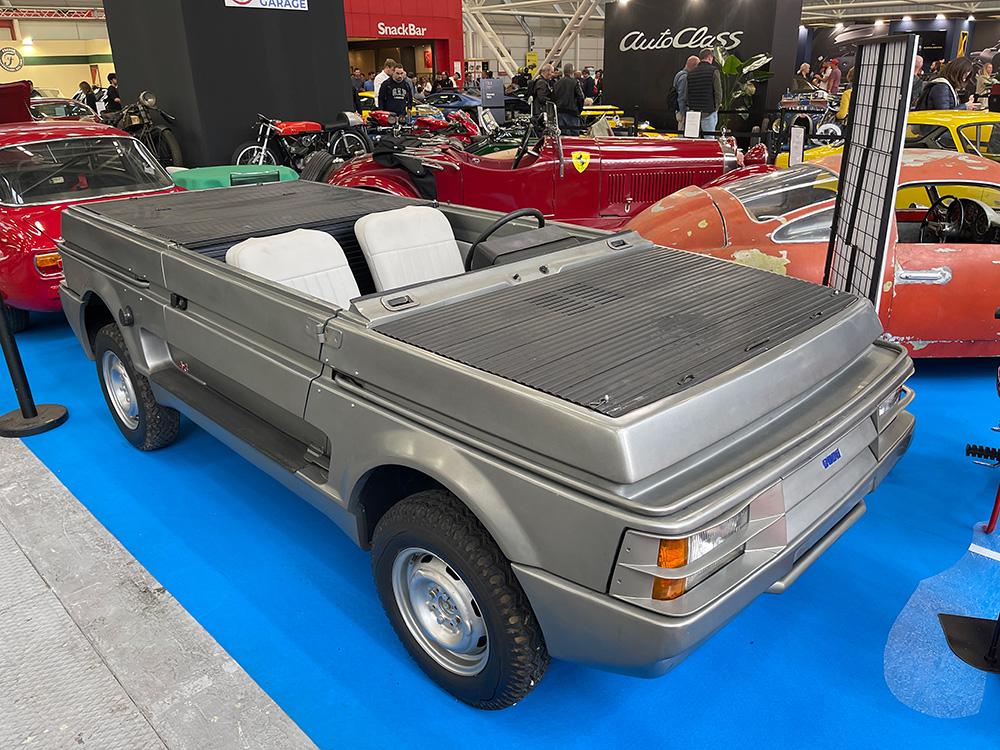
Italians love rallying – and that goes for the Polizia, too. This is one of two V6-engined Alfa Romeo 75s (Milanos in the US) used by the Italian State Police Racing Team out of 16 built in total by Alfa Corse. It made its debut in October 1989 at the Rome Rally, before being handed over to the duo of Vittorio Gommoso and Giorgio Nardin, who would compete in 15 rallies over three years. It was acquired at the infamous Duemila Ruote auction in 2016 and has since been restored.
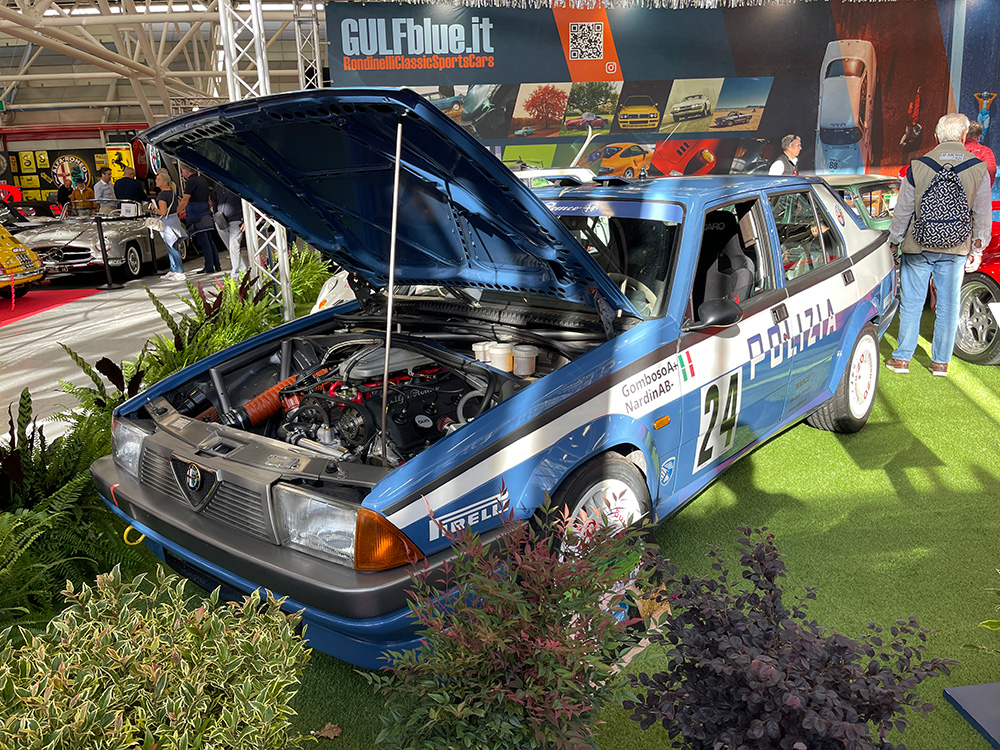
The FCA Heritage department brought a varied selection to Auto e Moto d’Epoca 2025, drawn from the Heritage Hub in Turin and the Alfa Romeo Museum in Milan (we’ve just interviewed the director of the latter about the plans for 2026; read that here). Below, top left, is the 1966 Alfa Romeo Scarabeo, which paired the Alfa 33 chassis with a four-cylinder engine and an OSI body, and was shown at the Paris Motor Show. Bottom right is a 1954 Lancia D25, an evolution of the D24 that would have allowed Alberto Ascari to compete in the Carrera Panamericana. However, Ascari’s death, the cancellation of the Carrera Panamericana and Lancia’s motor sport withdrawal led to the project being cancelled.
Finally, bottom left is the Franco Scaglione-penned Fiat Abarth 750 Record used to set durability and speed records in class H, for cars between 500cc and 750cc.
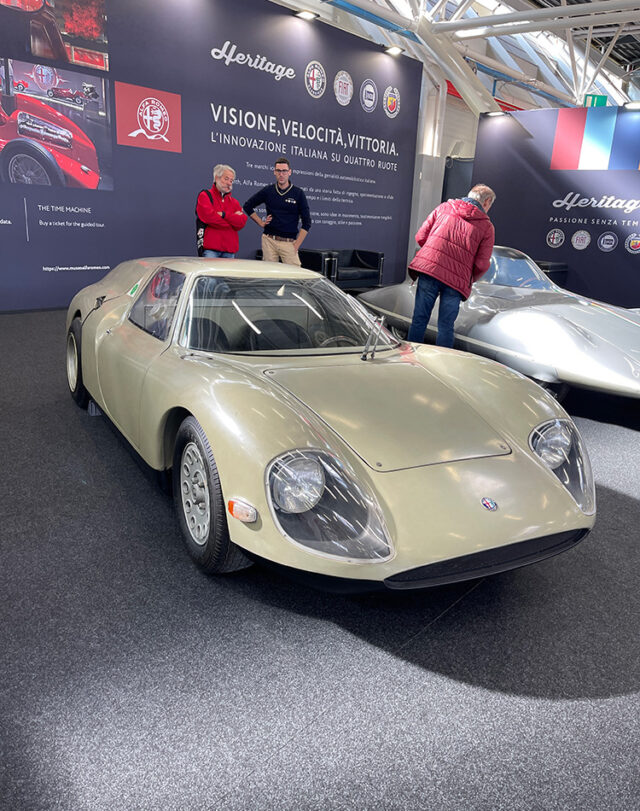
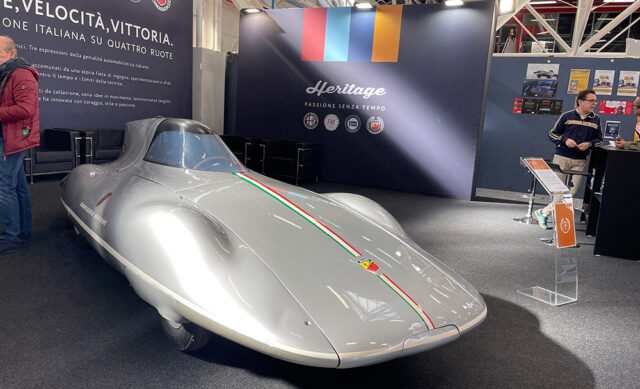
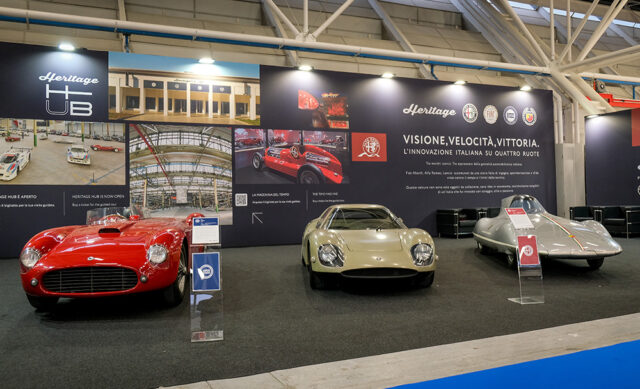
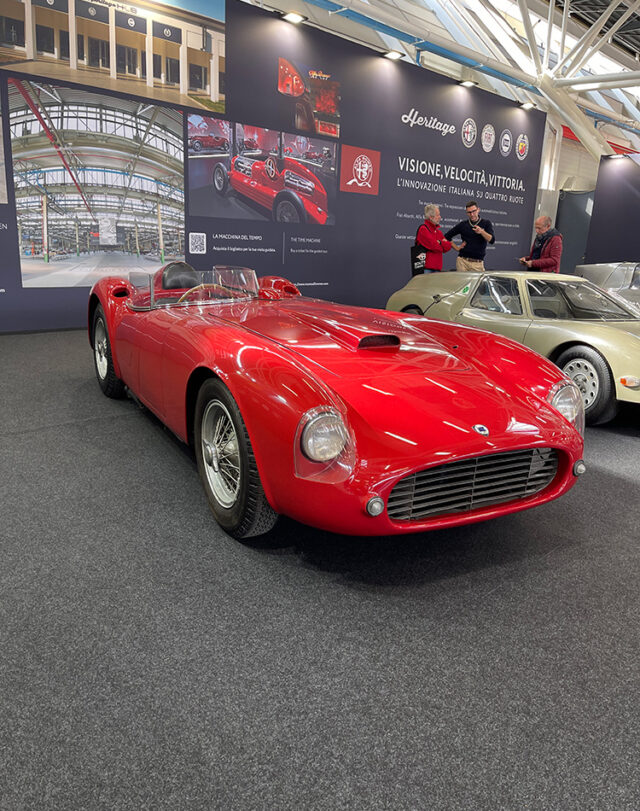
In 1938, the Italian Ministry of War ordered 150 Alfa Romeo 6C 2500s to be built for use in the East African colonies. The need to operate at high temperatures at high altitudes necessitated the development of a new carburettor with a device that could alter the mixture for different altitudes. Other military-specification items included a dual windscreen, two spare wheels and four additional fluid tanks. The cars remained in service until the 1960s; this particular 1942 example was used by the Governor of Libya.
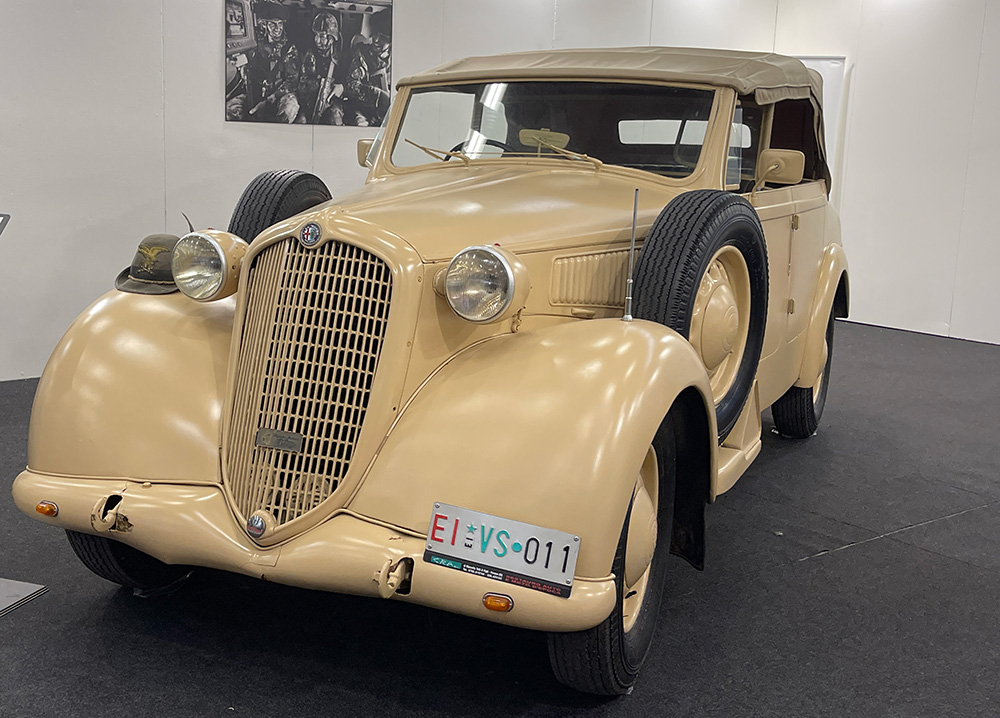
One of the joys of Auto e Moto d’Epoca 2025 was seeing some of the rarest Italian machinery outside of Ferrari on display. Below, from top left, there was a one-of-284 Alfa Romeo RZ, top right is the Maserati Racing – a 230-strong production-run variant of the Biturbo lineage with a 2.0-litre twin-turbo V6 that produced 283bhp, the highest output per litre of any car in the world in 1991.
Bottom right is a Fiat Panda Italia 90 produced to celebrate the soccer World Cup in 1990, and one of around 36 still believed to exist around the world. And bottom left is a one-of-eight Lancia Delta HF Integrale Evo 2 Club Lancia; made exclusively for members of Club Lancia, it featured a special stripe, bespoke badging and a black Poltrona Frau leather interior.
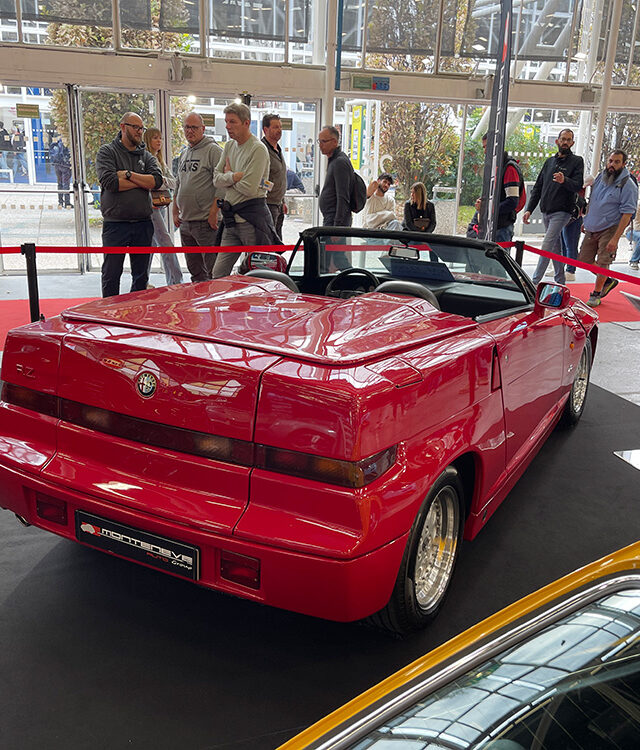
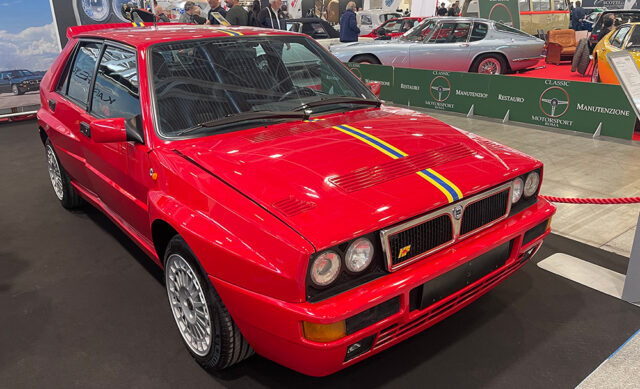
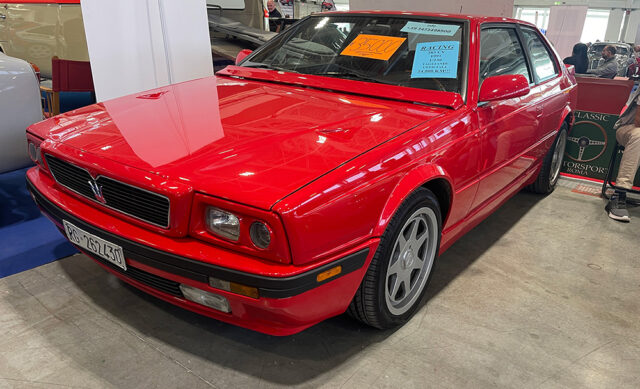
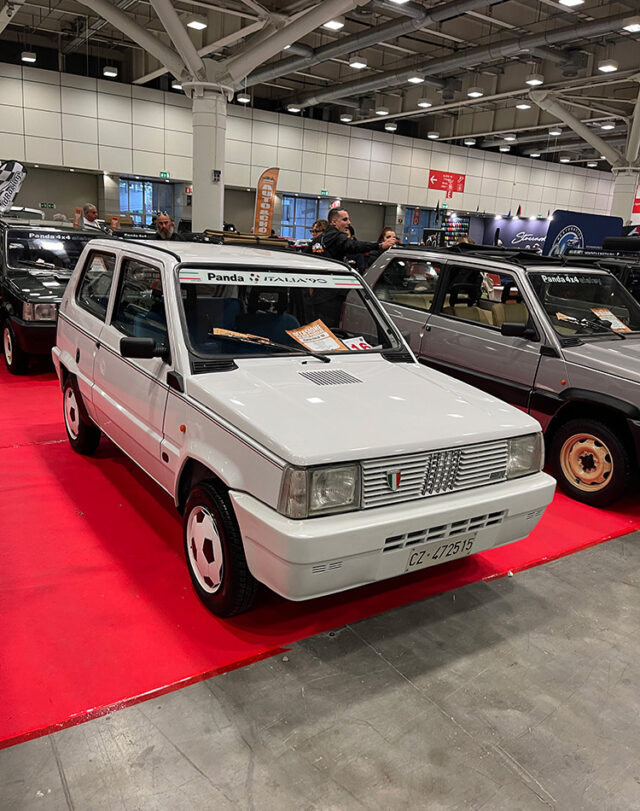
This Alfa Romeo 6C 1500SS Mille Miglia was originally raced by Scuderia Ferrari, and wore a Zagato body; it took second in class on the Mille Miglia in 1934. It was then acquired by Pasquino Ermini and had cycle wings attached for the 1937 Mille Miglia, where it finished first in class with Contini Pasquale and Salvadori Rodolfo behind the wheel. In 1938 it repeated the feat with Bellandri Felice and Vegelli Otello. It lost its Zagato body when it was restored in the 1980s, having been considered missing for many years, and it took part in the first modern Mille Miglia in 2017.
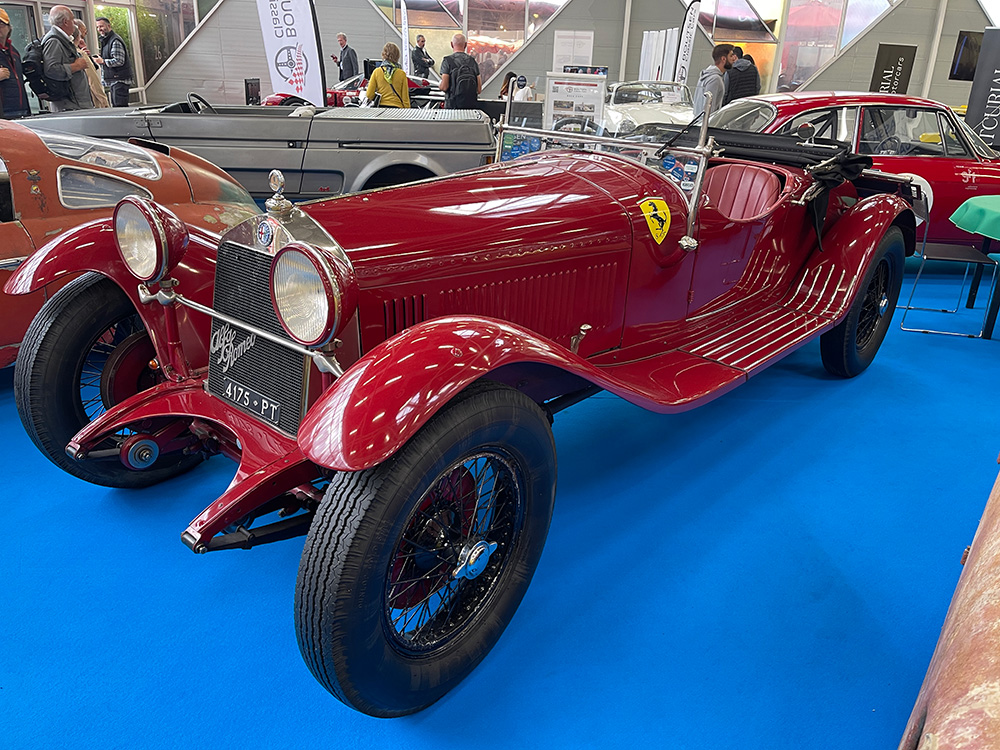
There were fewer projects at Auto e Moto d’Epoca 2025 than have been seen at previous events, but among those that were there was some fascinating machinery. The below car has quite the history; it began life as a Gilco concept for a spaceframe chassis for the Lancia Flaminia. Measuring 7cm shorter than a standard Flaminia, it was developed between 1959 and 1960 using the Mercedes-Benz 300 SL Gullwing as inspiration. Lancia wasn’t interested, but it retained the chassis.
Eventually, in a bid to make the Flaminia Sport Zagato competitive in GT racing, Lancia brought the Gilco spaceframe out of the corner of the factory and entrusted to Zagato and Carlo Facetti to finish, using an Ercole Spada-designed body. It was raced by Cesare Fiorio and Mennato Boffa at the Targa Florio on 1962, but retired due to transmission problems. It was later entered into the Ollon-Villars hillclimb in Switzerland, and it was then scrapped.
This car is a recreation of that chassis, using the original drawings from Gilberto Colombo sourced via Ercole Spada. The mechanicals were taken from a Portugal-market, British-registered Flaminia 2.8 3C, while the chassis was built by Giada Fly from Busalla, using the original design drawings and keeping the authentic front and rear Lancia subframes. Autorettifica Ceratto of Turin rebuilt the engine, while the bodywork was recreated by Auto Tecnica Lariana in 2019. It still needs paint, final assembly and a rebuild of the drivetrain.
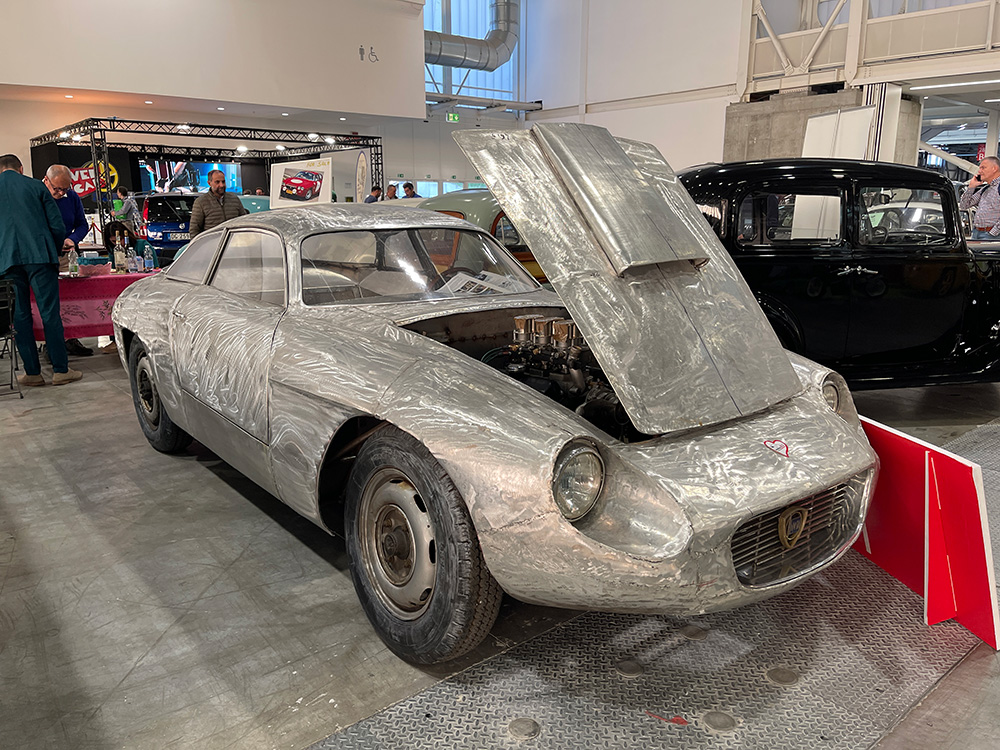
Here’s another restoration project at Auto e Moto d’Epoca 2025 – what was left of an Alfa Romeo Montreal…
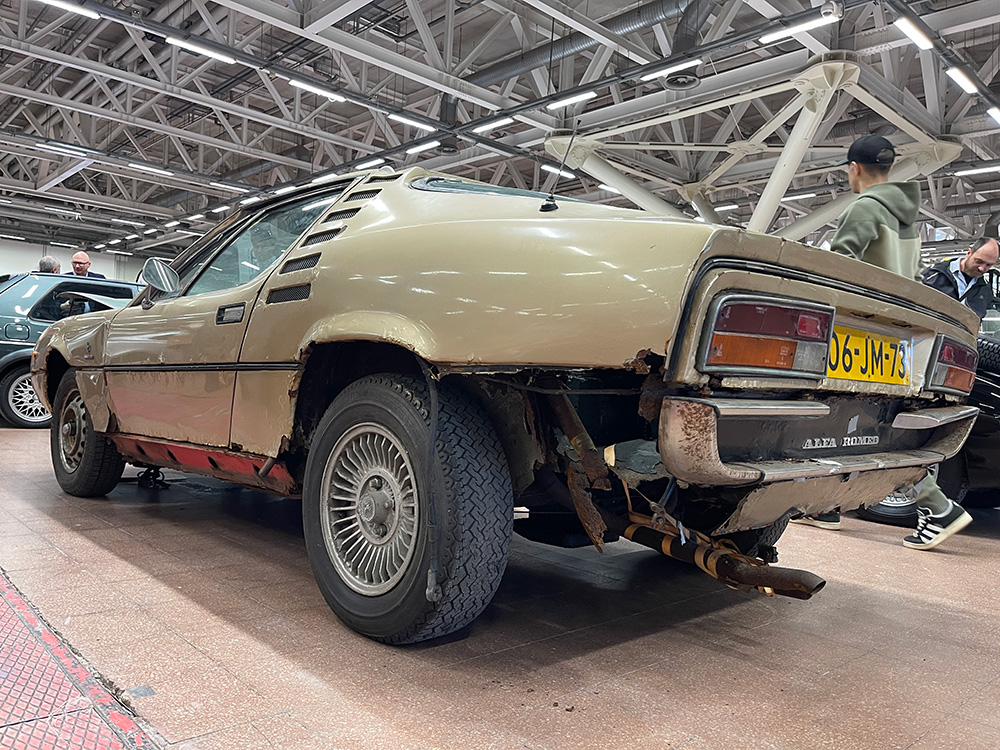
We’re used to seeing small family Fiats of the 1950s with hand-built Italian bodies, but this one is very different – this 1100-103 was built by German coachbuilder Wendler, better known for building the Porsche RS 61 bodies. It was a one-off commission from Edna Hill of the British Consulate General in Munich. She suggested the silhouette herself, as well as the Jaguar XK120-inspired nose, canvas sunroof and reclining seats.
There are also two secret compartments – perhaps Ms Hill was more than just a staff member at the consulate. She retained the car until 2005, having brought it back to the UK. It was acquired from a Government auction site in 2013 and registered in Italy in 2014; it has more than 200,000km on the clock.
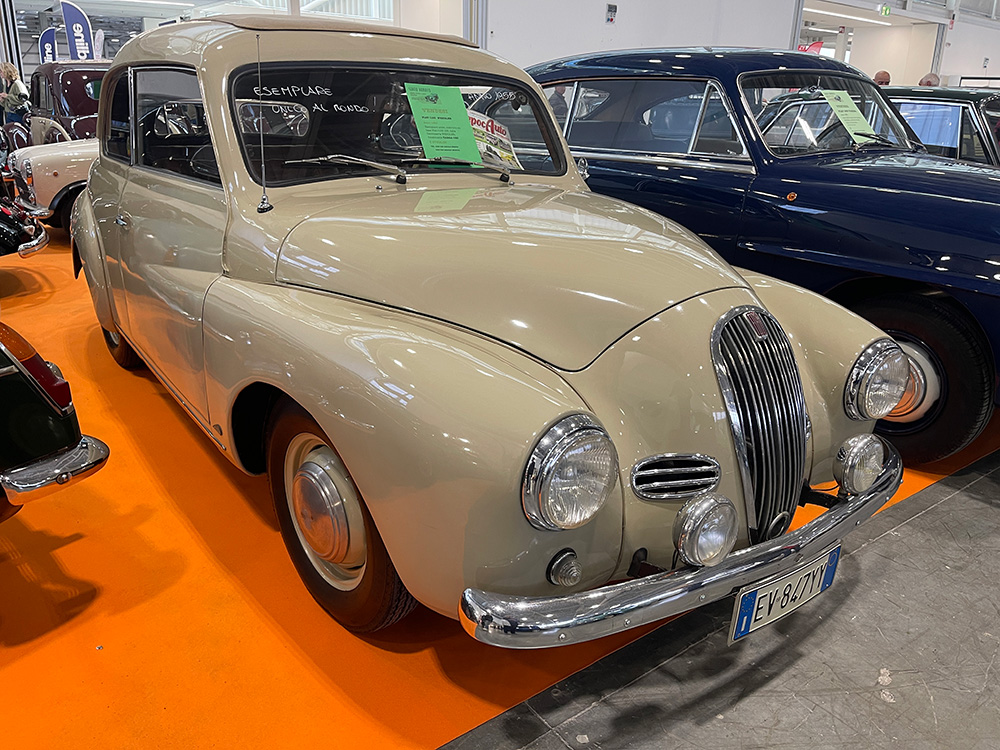
This 1939/1946 Fiat 500 Siata Barchetta was built by Carrozzeria Rocco Motto in 1946. Based on a 500 A Topolino, it has a Siata overhead-valve cylinder head and a supercharger. It took part in the Florence Concours d’Elegance in 1948 and the 1949 Coppa della Toscana, and was restored in the 1990s.
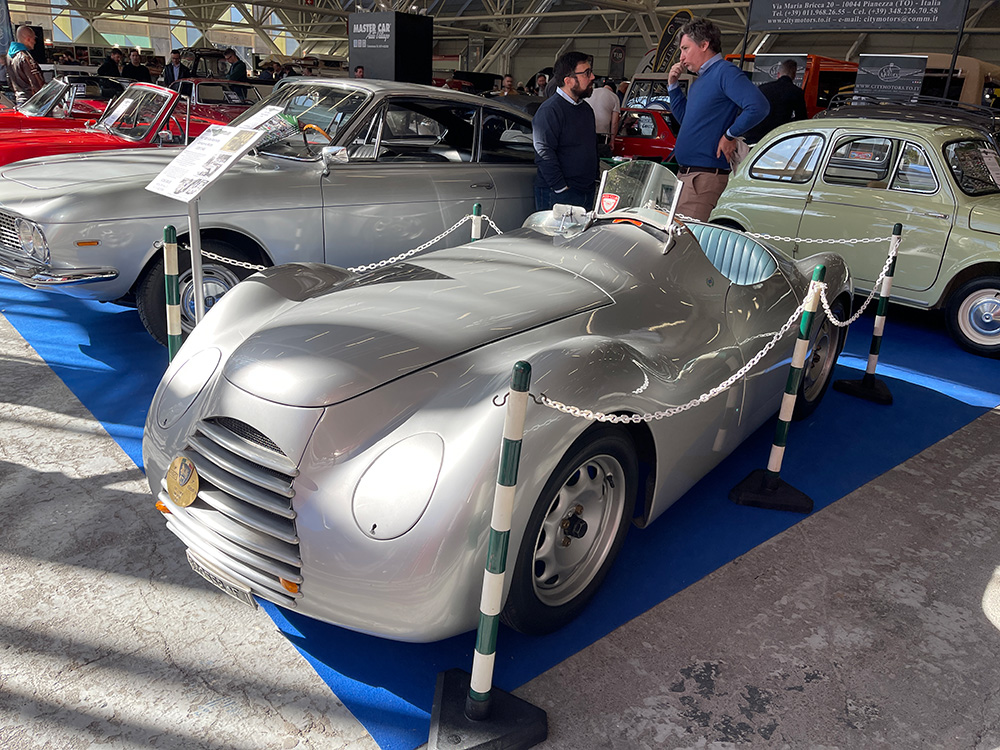
And finally to the weird and wonderful at Auto e Moto d’Epoca 2025. Below, here’s a Fiat 500L with a leopard print theme that continues inside (top left), one of 100 Orsa Spring beach cars built in Sardinia (top right), and on the bottom right… well, nobody really knows. Even the dealer couldn’t explain much, other than that the car was built by a motorcycle company and is unique. Bottom right is the wooden Fiat Panda from Carmagheddon – the coachbuilder famed for building super-thin and super-low Pandas.
The weirdest exhibit of all had to be the Mercedes-Benz G-Wagen with a matt-black velvet body wrap – but that didn’t photograph well (probably for the best…).
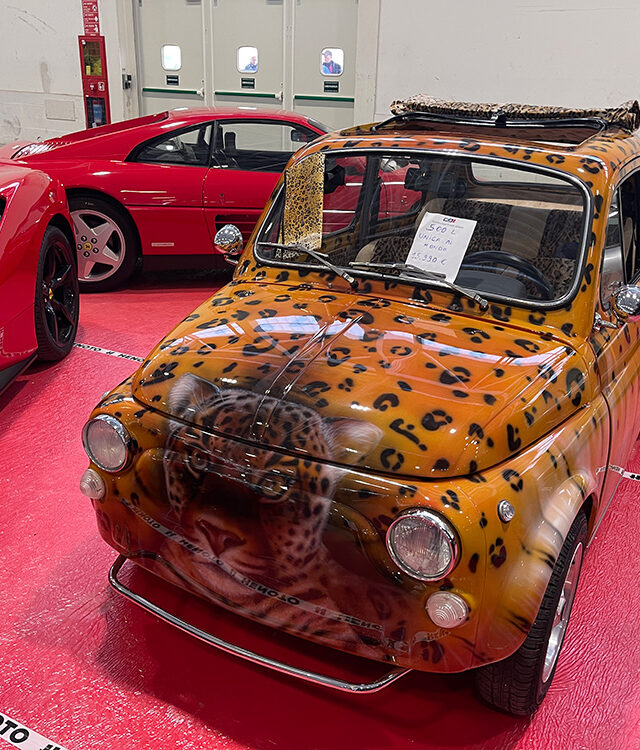
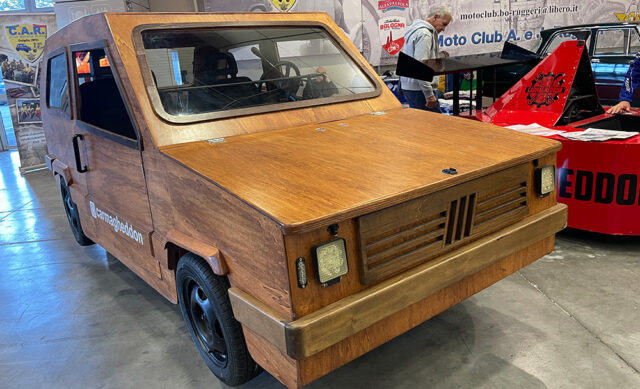
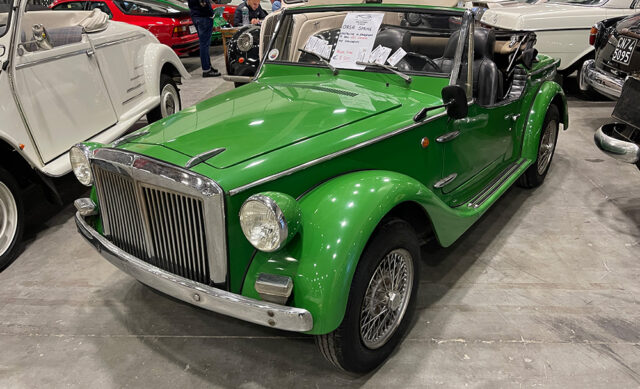
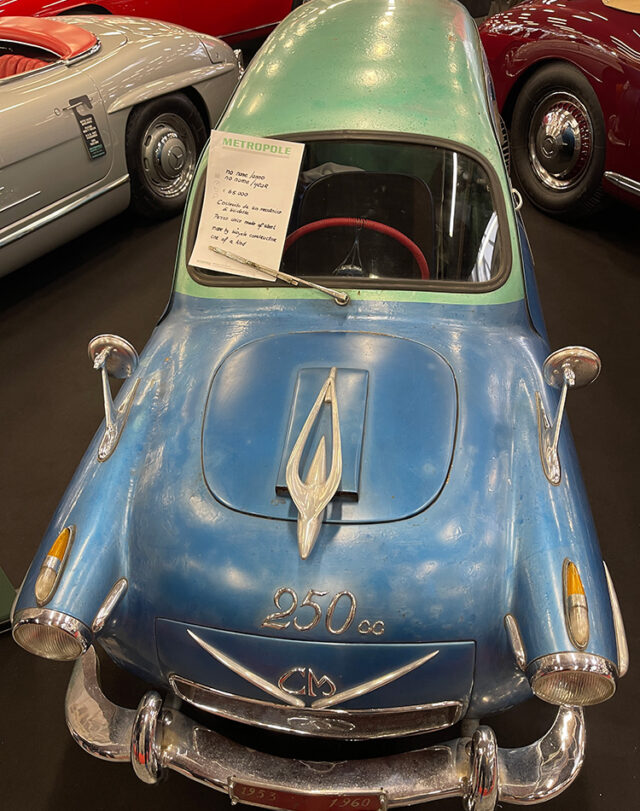
The dates for next year’s event have been announced – Auto e Moto d’Epoca returns to Bologna in late October 2026. More details can be found here.
